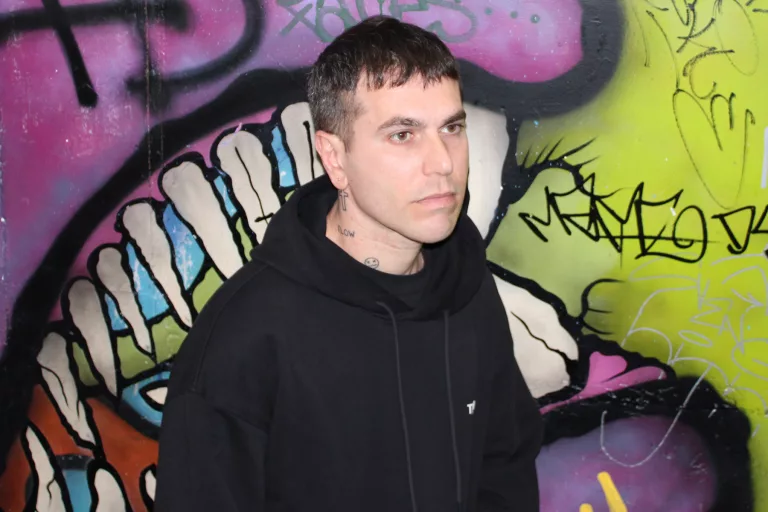
Within the early 2010s, the idea of being an ‘impartial artist’ boomed, with many artists relieving themselves from the industrial expectations that got here with being signed to main document labels and exploring their inventive freedom with respect to their writing and manufacturing on their very own.
Unbiased artists in right this moment’s digital atmosphere, maybe, really feel even freer, as they’ve extra room for experimentation. For instance, they will put up short-form movies that includes their upcoming releases and consider which performs greatest, utilizing that as an indicator to decide on which songs needs to be launched as singles. They will additionally use social media analytics to find out the place their followers are positioned, serving to them determine on the cities to e book their subsequent tour. Nonetheless, what is likely to be perceived as “freedom of selection” to an artist these days, is likely to be nearer to manipulation if artists and different music trade professionals usually are not skilled to interpret their information.
Whereas commercially launched music has been a commodity ever because it has been a supply of revenue[1], it was beforehand a cultural product — of which plastic copies have been commercialized. This has been changed by digital content material, and its audience is now not followers who actively buy it, however followers who take heed to it and generate aggregated income like streams, advert clicks, and publicity charges[2].
Cultural industries are more and more mediated by privately owned digital platforms (e.g. Meta, Google, Apple, Amazon). These platforms’ financial and infrastructural extensions have an effect on not solely distribution but additionally the manufacturing of tradition itself[3]. Whereas algorithmic logic has been affecting the manufacturing of video video games, the formatting of reports, and society itself[4], it’s more and more shaping music and the humanities, that are starting to depend upon algorithmically filtered platforms for his or her industrial success[5].
Success within the streaming period appears to be measured by followers, listeners, and streams as in the event that they have been goal indicators of success. We will parallel this to how a track’s success was measured — usually, in a biased method — within the 20th century: Billboard’s Prime 40[6] or gross sales reviews from bodily shops like SoundScan[7]. As we speak, it’s measured by digital analytics applications from all types of platforms: Spotify for Artists, Instagram Insights, Google and YouTube Analytics, amongst many others. As biased as main label advertising executives have been within the twentieth century, most of them had at the very least some form of information of knowledge interpretation. These days, nevertheless, impartial artists, producers, and varied music trade executives are drowning in an ocean of invaluable information, with little capability to utilize it.
This information hole results in poor decision-making. We now have seen reserving brokers e book artists for native venues based mostly on their giant following on socials, ignoring the truth that these followers may stay in a special nation; A&R executives curating competition line-ups based mostly on an artist’s month-to-month Spotify streams, being unaware that a big portion of these streams truly come from passive listeners on editorial playlists, and never professional followers. Some A&R executives may even choose an artist based mostly on the variety of YouTube views of a music competition’s full stay stream, not contemplating what number of viewers have been retained throughout that artist’s set, since a whole lot of instances, viewers will be a part of the stay stream solely to look at a selected artist after which sign off.
The shallow use of knowledge from trade professionals akin to reserving brokers, A&R executives, and lots of others, is extraordinarily dangerous to artists. Nonetheless, it’s evident that artists themselves are manipulated into producing their music following this identical logic. For some time now, Spotify for Artists’ major promotional video has been “Methods to get playlisted”[8]. Whereas a number of trolls and hackers have dribbled previous the system to extend their income via ambient soundtrack playlists[9], impartial artists are shopping for into the frenzy of getting playlisted as the principle aim of a brand new launch.
This isn’t new. Identical to how radio and print media acted as “gatekeepers” and had a serious affect on the expansion of artists by the top of the twentieth century[10], playlist curators have the facility to place new songs and artists within the highlight[11]; besides, many playlists are curated by algorithms as a substitute of people. A track will solely keep on an editorial playlist so long as it performs effectively inside that playlist within the first week[12]. Algorithmic playlists akin to “Uncover Weekly” and “Launch Radar” fully skip human curation. They’re constructed upon a number of “style” indicators, together with tracks the person has beforehand listened to, artists and playlists they like and/or comply with, and artists and tracks preferred by their associates. Every interplay made by a person on a platform generates information that can be utilized for this type of monitoring. Performs, likes and follows on a music platform are registered and constructed as much as this profile, in addition to some other interactions on related social networks like Fb, Instagram, and TikTok. By crossing this info with every track’s particular person information — akin to style tags, the vocalist’s gender, the band’s formation, samples, tempo and even “danceability” — the algorithm selects tracks which are almost certainly to curiosity listeners.
This mannequin matches the idea of a datacracy: a system wherein choices are data-driven[13]. “Datacracies” are utilized to digital territories, which aren’t sure to geopolitical legal guidelines, however as a substitute, to nearly organized communities[14].
Unbiased artists, whereas making an attempt to understand the brand new “datacratic” market and perceive the algorithm’s course of of selecting songs for playlists, discover themselves with a combination of biased targets for every new single: getting playlisted, and getting on-line followers engaged. Sadly, there isn’t a system for this — though varied music enterprise and social media “specialists” may argue it exists and supply standardized options via their on-line programs. Social media influencers have been reverse engineering the algorithmic black packing containers of their chosen platforms for some time now, by tailoring their communication methods based mostly on their very own outcomes[15]. Musical artists, nevertheless, is likely to be tailoring the essence of their artwork in pursuit of a biased quantitative digital standing, shifting in opposition to their owned independence from majors[16].
Earlier analysis has indicated that platforms themselves behave in another way for every musical style[17]. This analysis relies on the Brazilian music market, which could be very peculiar. Whereas Brazil is without doubt one of the quickest rising music markets — as a result of development of music streaming[18] — additionally it is one of many few international locations on this planet wherein its nationwide music fully dominates the charts and basic consumption[19]. Of the highest 100 songs in Brazil on streaming platforms in 2021, solely 6 have been non-Brazilian; the primary worldwide track to seem on this record was Lil Nas X’s “Montero (Name me by your title)”, in forty second place[20]. The opposite 94 have been distributed between two of essentially the most attribute genres of Brazilian well-liked music: Sertanejo and Brazilian Funk.
Sertanejo is a type of Brazilian folks music that originated within the rural areas of states like São Paulo and Minas Gerais — although, right this moment, it carries varied pop parts. It may be in comparison with the sonority and basic “vibe” of American nation music and what it represents. Brazilian Funk, alternatively, has parts akin to sticky ostinatos, lyrical puns, and brief melodies[21]. Whereas each genres are related to partying, they navigate digital music and media platforms in fully alternative ways. That is evidenced by a research via a Digital Music Gatekeeping mannequin, with information offered by the Brazilian aggregator Playax, which might be explored within the paragraphs beneath.
Payola just isn’t a forbidden apply in Brazil. It started as a number of casual items and incentives however finally become large sums of cash getting used to make producers’ methods into radio programmers’ style[22]. Now, it’s turn out to be as widespread, authorized, and important as promoting — included as promotion charges. This apply is on the root of the promotion of Sertanejo tracks and banning it could fully alter the Brazilian music market. When finding out information from Sertanejo artists in 2018[23], it grew to become clear that the first technique of reaching Sertanejo followers was via the radio, and many of the radio performs come from these payola incentives; for a number of weeks, the observe is performed extensively, after which out of the blue forgotten.
Brazilian Funk, nevertheless, has a very totally different entry level into the gatekeeping circle. All the Brazilian Funk tracks from the research talked about above made their first look on YouTube, and most instances, as house recordings from impartial artists. Re-recordings of each audio and video with the well-known funk producer KondZilla would then enhance them to stratospheric numbers on YouTube, akin to “MC Loma e as Gêmeas Lacração”, which grew from 500,000 to three million every day views (each averages) with the re-release of their observe “Envolvimento” by KondZilla’s label and YouTube channel.
One factor the artists which were positioned into the 2021 Brazil high 100 songs (talked about beforehand) have in widespread is an organized advertising division and the acquired information of their major gatekeeping entry factors. Brazilian Funk artists are investing in YouTube, whereas Sertanejo artists are investing in radio. Playlisting doesn’t have the identical impact on their success, which is proven by their decrease Spotify streams when in comparison with YouTube and radio on the time.
Out of that very same 2021 Brazilian high 100 record, 26 tracks have been by impartial artists, and 4 of them have been by a Brazilian Funk various label. All different 70 tracks have been listed as distributed by main labels, though lots of them may need solely distribution and never recording contracts. Be it impartial, distributed, main contracted or alternatively launched, these artists produce music in such attribute genres that they can establish genre-specific paths that work for his or her specific profession.
This leads us again to the impartial artists that don’t have a advertising division, and that match into much less peculiar genres than Sertanejo or Brazilian Funk. It’s a lot more durable for an impartial artist to establish if they need to make investments their money and time on YouTube, Instagram, Spotify, radio, or TikTok, and create a steadiness between so many choices.
Even when an artist is profitable in a selected digital house — akin to Instagram or TikTok — would their followers (who have been most likely interested in their home made, intimate acapella covers) attend their full band set of authentic music in a neighborhood venue?
Gathering and analyzing music-related information is on the core of Playax[24], the Brazilian firm which offered the bottom information for the 2018 evaluation of the Sertanejo and Funk markets. Their service started by monitoring radio, “listening” to totally different stations, figuring out tracks by audio fingerprint, after which offering detailed reviews on radio performs for artists, who would then coordinate excursions with native radio campaigns. The vast majority of their purchasers are giant media conglomerates and live performance organizers, desirous about utilizing information intelligence to pick their acts. Unbiased artists, nevertheless, might be essentially the most benefited by this mannequin of knowledge service, which helps analyze and interpret giant quantities of knowledge slightly than simply offering artists with uncooked information; since it may be misinterpreted and may even have an effect on one’s inventive choices.
Large information is right here, and is reachable, however it’s drowning artists in a sea of misinformation[25]. Realizing make sense of it’s important, or else artists may find yourself producing music to suit into platforms that aren’t even utilized by their audience. Navigating information with out understanding it will probably rework the liberty and autonomy gained by impartial artists into vulnerability and discouragement, an excellent larger manipulation and sense of strain than the historic impact main labels had on their artist’s inventive course of.
Edited by Tavishi Nidadhavolu
[1]Straw, Will. 2002. “Music as Commodity and Materials Tradition.” Repercussions 7–8: 147–71.
[2]Gurgel, Dani. 2016. “O Novo Público Da Indústria Musical : Aquele Que Compra Ou Aquele Que Escuta?” Signos Do Consumo 8 (2): 44–53.
[3] Nieborg, David B., and Thomas Poell. 2018. “The Platformization of Cultural Manufacturing: Theorizing the Contingent Cultural Commodity.” New Media and Society 20 (11): 4275–92.
[4]Beer, David. 2017. “The Social Energy of Algorithms.” Data Communication and Society 20 (1): 1–13.
[5]Navar-Gill, Annemarie. 2020. “The Golden Ratio of Algorithms to Artists? Streaming Companies and the Platformization of Creativity in American Tv Manufacturing.” Social Media and Society 6 (3).
[6]Hirsch, Paul M. 1972. “Processing Fads and Fashions : An Group-Set Evaluation of Cultural Business Techniques.” The American Journal of Sociology 77 (4): 639–59.
[7]McCourt, Tom, and Eric Rothenbuhler. 1997. “SoundScan and the Consolidation of Management within the Fashionable Music Business.” Media Tradition & Society 19: 201–18.
[8]Accessible at: Accessed in Jun 22 2022.
[9]Morris, Jeremy Wade. 2020. “Music Platforms and the Optimization of Tradition.” Social Media and Society 6 (3).
[10]Shoemaker, Pamela, and Tim Vos. 2009. Gatekeeping Principle. New York: Routledge.
[11]Prey, Robert. 2020. “Finding Energy in Platformization: Music Streaming Playlists and Curatorial Energy.” Social Media + Society 6 (2): 205630512093329.
[12]Bonini, Tiziano, and Alessandro Gandini. 2019. “‘First Week Is Editorial, Second Week Is Algorithmic’: Platform Gatekeepers and the Platformization of Music Curation.” Social Media and Society 5 (4).
[13]Gurgel, Dani. 2021. “Datacracia Na Indústria Musical: Quando Todos Somos Gatekeepers e Produzimos Música Como as Plataformas Pedem.” In ABCiber.
[14]Lemos, André. 2009. “Cibercultura Como Território Recombinante.” In A Cibercultura e Seu Espelho: Campo de Conhecimento Emergente e Nova Vivência Humana Na Period Da Imersão Interativa., edited by E TRIVINO and E CAZELOTO, 38–46. São Paulo: ABCiber; Instituto Itaú Cultural.
[15]Brevini, Benedetta, and Frank Pasquale. 2020. “Revisiting the Black Field Society by Rethinking the Political Financial system of Large Information.” Large Information & Society 7 (2): 205395172093514.
Petre, Caitlin, Brooke Erin Duffy, and Emily Hund. 2019. “‘Gaming the System’: Platform Paternalism and the Politics of Algorithmic Visibility.” Social Media + Society 5 (4): 205630511987999.
Cotter, Kelley. 2019. “Taking part in the Visibility Recreation: How Digital Influencers and Algorithms Negotiate Affect on Instagram.” New Media and Society 21 (4): 895–913.
[16]O’Dair, Marcus, and Andrew Fry. 2020. “Past the Black Field in Music Streaming: The Influence of Advice Techniques upon Artists.” Fashionable Communication 18 (1): 1–13.
Eriksson, Maria, Rasmus Fleischer, Anna Johansson, Pelle Snickars, and Patrick Vonderau. 2019. Spotify Teardown: Contained in the Black Field of Streaming Music. Cambridge: MIT Press.
[17]Gurgel, Dani, Luli Radfahrer, Alexandre Regattieri Bessa, Daniel Torres Guinezi, and Daniel Cukier. 2020. “Digital Music Gatekeeping: A Examine on the Influence of Spotify Playlists and YouTube Channels on the Brazilian Music Business.” In Spotification of Fashionable Tradition within the Discipline of Fashionable Communication, edited by Patrick Burkart, 78–99. New York: Routledge.
[18]IFPI. 2019. “International Music Report 2019: State of the Business.” Zurich.
———. 2021. “International Music Report 2021.” Zurich.
ProMusicaBR. 2022. “Mercado Brasileiro Em 2021.”
[19]Wikström, Patrik. 2009. The Music Business: Music within the Cloud. Cambridge: Polity Press.
[20]ProMusicaBR. “Mercado Brasileiro Em 2021”.
[21]Sá, Simone Pereira de, and Gabriela Miranda. 2011. “Aspectos Da Economia Musical Fashionable No Brasil: O Circuito Do Funk Carioca.” In Nas Bordas e Fora Do Mainstream Musical: Novas Tendências Da Música Independente No Início Do Século XXI, edited by Micael Herschmann. São Paulo: Estação das Letras e Cores.
[22]Gambaro, Daniel, Eduardo Vicente, and Thais Saraiva Ramos. 2018. “A Divulgação Musical No Rádio Brasileiro: Da ‘Caitituagem’ Aos Desafios Da Concorrência Digital.” Revista Contracampo 37 (2).
[23]Gurgel et al. “Digital Music Gatekeeping”
[24]Accessible at: Accessed in Jun 22 2022.
[25]Sadowski, Jathan. 2019. “When Information Is Capital: Datafication, Accumulation, and Extraction.” Large Information and Society 6 (1).
Brevini, Benedetta, and Frank Pasquale. 2020. “Revisiting the Black Field Society by Rethinking the Political Financial system of Large Information.” Large Information & Society 7 (2): 205395172093514.
O’Neil, Cathy. 2016. Weapons of Math Destruction: How Large Information Will increase Inequality and Threatens Democracy. New York: Crown Publishing Group.











